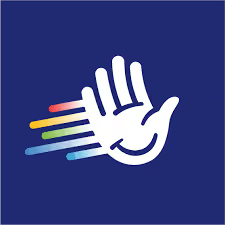Introhive Alternatives
Compare 10 Introhive alternatives. Our in-depth analysis of relationship intelligence tools helps you choose the right platform for your business.
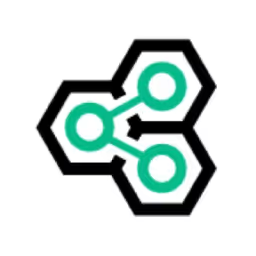
You might be using Introhive for its relationship intelligence capabilities. The platform is good at mapping out who knows who within your organization, which helps with collaboration and finding growth opportunities. It gives you a clearer view of your company's network.
However, some users mention that data can sometimes be inaccurate, and there might be a learning curve. For this reason, we analyzed the top alternatives based on G2 reviews to help you find the right fit. Let's get started.
Consider 11x for Your Sales Team
If you want to add digital workers to your sales process, 11x provides tools for task automation. This approach lets your sales representatives concentrate on their primary goals.
11x is a GTM platform with AI agents that manage the sales process. An agent named Alice finds prospects, handles outreach, and updates your CRM. Another, Julian, qualifies inbound leads and books meetings.
The platform consolidates functions like data enrichment, outreach, and email warmup. This replaces the need for multiple separate tools within a GTM stack.
Introhive Alternatives
Here is a detailed review of the top Introhive alternatives. We will cover pricing, main features, and the specific advantages and drawbacks of each tool compared to Introhive.
1) People.ai
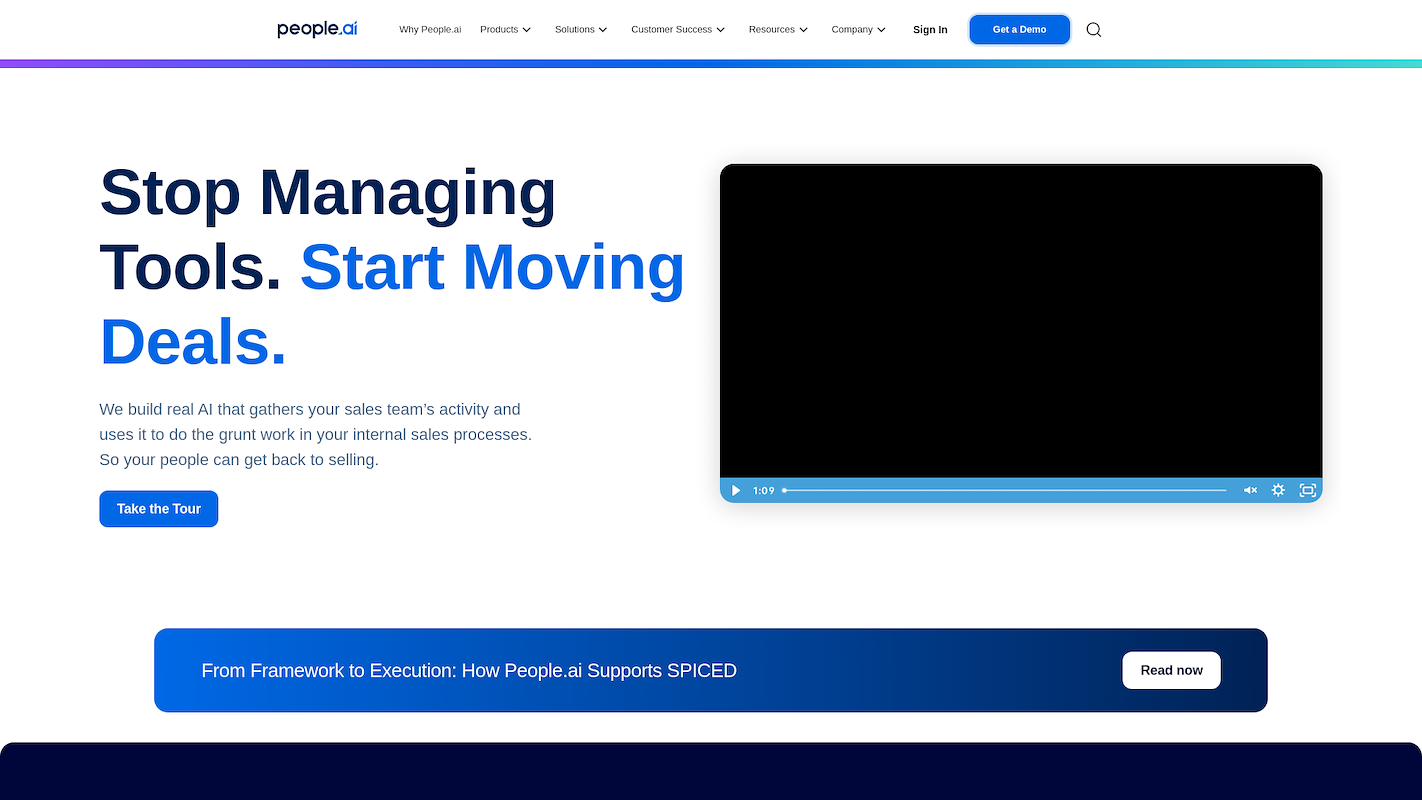
People.ai is a revenue intelligence platform that automatically captures seller activities such as meetings, emails, and calls. It unifies this data with CRM information to reduce manual work for sales teams. The system supports account strategy, opportunity qualification, and deal health checks.
It also aims to improve forecast accuracy and shorten sales cycles. The platform gives better visibility into post-sale activities to help prevent customer churn.
People.ai's Main Features
- Generates automated, data-backed account plans to align pre-sale, post-sale, and renewal teams for repeatable success.
- Automates deal qualification and visualizes deal health to focus representatives on the opportunities most likely to close.
- Combines pipeline management and forecasting in a single view, using custom AI agents trained on the customer’s own revenue model.
- Offers a free tool, PeopleGlass, which provides a single-view interface for reps to update CRM records in seconds.
How People.ai Compares to Introhive
Average Review score: 4.4/5 stars based on 463 G2 reviews.
- People.ai provides predictive analytics to improve forecast accuracy. This is a more direct approach to revenue prediction compared to Introhive's relationship mapping.
- The tool offers opportunity scoring and live pipeline management. This gives sales teams a clearer view of deal health than the network-focused insights from Introhive.
- It includes a free tool, PeopleGlass, for quick CRM updates from a single interface. This simplifies data entry for sales reps more than Introhive's standard activity capture.
- The platform generates automated account plans based on sales data. This offers a more structured approach to account strategy than Introhive's relationship intelligence.
Where People.ai May Fall Short
- Some users report that People.ai does not capture activity from platforms like LinkedIn or Slack. This is different from Introhive, which builds its relationship map from a wider range of communication channels.
- The tool might occasionally have issues syncing all activities, such as meetings. Compared to Introhive's focus on precise relationship data, this could lead to an incomplete activity picture for some accounts.
- It offers less client-level customization than Introhive. For teams that need to tailor the platform to very specific workflows, this could be a limitation.
Pricing and Budget Considerations
User reviews place both platforms in a high-cost category. People.ai, however, shows a faster return on investment at 13 months compared to Introhive's 25 months. For exact pricing, we recommend contacting People.ai directly as costs are customized based on your needs.
2) Affinity

Affinity is a relationship-intelligence CRM platform for private-capital dealmakers. The platform automates activity capture and quantifies relationship strength. It uses enriched company and people data to help investment teams find, evaluate, and close deals.
Use cases include deal management, portfolio support, and network expansion. The system also helps with investor relations and lets teams source new opportunities through network analysis.
Affinity's Main Features
- Pulls firmographic and funding data from over 40 sources, including Crunchbase, Dealroom, and PitchBook.
- Manages deal flow and pipelines using Kanban boards, list views, and customizable data fields.
- Provides tools for discovering and tracking new deal opportunities through a dedicated sourcing module.
- Offers access to relationship and deal data on the go with native iOS and Android applications.
How Affinity Compares to Introhive
Average Review score: 4.4/5 stars based on 68 G2 reviews.
- Affinity is built for relationship-driven industries like private capital and financial services. This is a more specialized focus than Introhive's general sales platform.
- The tool enriches company data from over 40 sources, including PitchBook and Crunchbase. This provides deeper firmographic details compared to Introhive's internal network analysis.
- It offers dedicated deal flow management tools like Kanban boards and customizable list views. This gives teams more direct pipeline control than Introhive's relationship mapping.
- The platform includes native mobile applications for both iOS and Android. This allows teams to access deal and relationship data while on the move, a feature not emphasized for Introhive.
Where Affinity May Fall Short
- Affinity is highly specialized for industries like private capital. This focus means it may not fit the needs of a general sales team as well as Introhive's broader platform.
- Some users report that the tool offers limited customization options. Compared to Introhive, this might be a drawback for teams with very specific workflow requirements.
- The platform's relationship mapping focuses on external data sources. It might not map internal company networks as extensively as Introhive, which analyzes a wider range of internal communication channels.
Pricing and Budget Considerations
User reviews place both platforms in a high-cost category. Affinity has a shorter implementation time of two months compared to Introhive's three. For specific costs, we recommend visiting Affinity's official website, as pricing is customized.
3) Ebsta

Ebsta is a revenue-intelligence platform that connects mailboxes, calendars, and call recorders to CRMs like Salesforce, HubSpot, and Bullhorn. It makes sales organizations data-driven through the analysis of customer interactions and deals.
The system provides insights for deal and pipeline management, improves forecast accuracy, and automates CRM data capture. This process helps teams hit revenue targets.
Ebsta's Main Features
- Records and analyzes sales calls to capture deal details.
- Offers analytics for managing deals, pipelines, and forecasts.
- Benchmarks top-performer behaviors to recommend improvement actions for the team.
- Pushes insights and alerts into collaboration tools through Slack and workflow integrations.
How Ebsta Compares to Introhive
Average Review score: 4.7/5 stars based on 48 G2 reviews.
- Ebsta offers coaching tools that analyze top-performer behaviors to create team-wide recommendations. This provides a more structured approach to sales training compared to the general network insights from Introhive.
- The tool provides data-driven insights specifically for forecast calls. This gives sales leaders a direct way to assess forecast accuracy, unlike Introhive's relationship mapping.
- Its platform adapts revenue insights to a company's specific sales methodology. This offers process customization that differs from Introhive's broader relationship intelligence platform.
- The system allows for detailed deal inspection with data from calls and emails. This provides a granular view of individual opportunities, while Introhive focuses more on the overall relationship network.
Where Ebsta May Fall Short
- Some users report that Ebsta does not automatically sync all activities. This is different from Introhive, which focuses on capturing a complete picture of interactions to build its relationship map.
- The tool centers on sales process management and revenue insights. For teams that need general relationship mapping for internal collaboration, Introhive's broader platform may be a more direct fit.
- Its relationship data comes mainly from mailboxes, calendars, and call recordings. Compared to Introhive, it might offer a less complete view of networks that form on other communication channels.
Pricing and Budget Considerations
Ebsta offers transparent, tiered pricing, with its Relationship Intelligence plan at $60 per user, which provides more budget predictability than Introhive's custom, high-cost model. This makes Ebsta a more scalable option for teams of different sizes. For detailed pricing, we recommend visiting Ebsta's official website.
4) Clari
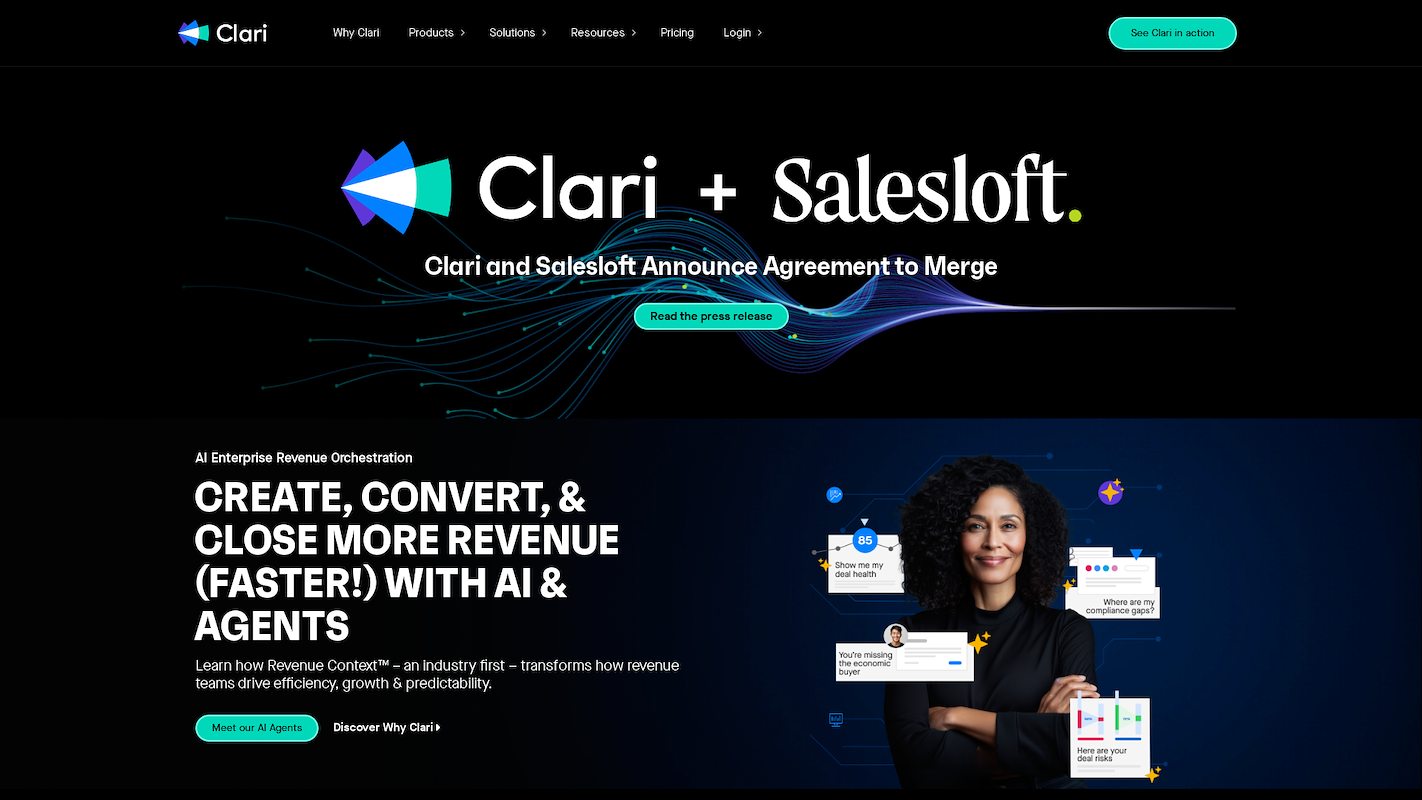
Clari is a revenue platform that gives companies control over their revenue process. It captures data from sales activity and the CRM to create a single source of truth for the entire revenue team. This helps with pipeline inspection, deal management, and sales forecasts.
The platform aims to improve forecast accuracy and make revenue outcomes more predictable.
Clari's Main Features
- Offers Revenue AI Agents, which are generative-AI assistants that accelerate deal inspection and automate forecasting.
- Provides a buyer collaboration tool, Align, for creating and sharing mutual action plans.
- Includes Copilot, a feature for conversation intelligence and coaching based on call analysis.
- Features Groove for sales engagement and prospecting automation.
How Clari Compares to Introhive
Average Review score: 4.6/5 stars based on 5,464 G2 reviews.
- Clari uses Revenue AI Agents to automate forecasting and deal inspection. This provides a direct approach to revenue prediction, unlike Introhive's relationship mapping.
- The platform includes a buyer collaboration tool, Align, to create shared mutual action plans. This function is different from Introhive's focus on internal network visibility.
- It offers conversation intelligence and coaching through its Copilot feature. This gives managers specific insights from sales calls, while Introhive provides broader relationship intelligence.
- The tool provides sales engagement and prospecting automation with its Groove feature. This is a direct approach to outreach, different from Introhive's method of finding opportunities through network analysis.
Where Clari May Fall Short
- Clari's focus is on the revenue process, so it may not map internal company networks as extensively as Introhive, which specializes in creating a detailed view of "who knows who."
- The platform centers on sales activity data from the CRM and connected tools. It might not capture the informal internal networks that Introhive identifies from a broader set of communication data.
- Some users report that Clari has limited customization for unique sales processes. This is different from Introhive, which can sometimes be tailored more closely to a company's specific relationship intelligence needs.
Pricing and Budget Considerations
User reviews place both platforms in a high-cost category. Clari, however, shows a faster return on investment at 12 months compared to Introhive's 25 months. For exact pricing, we recommend contacting Clari directly as costs are customized based on your needs.
5) Gong

Gong is a revenue intelligence platform that analyzes conversations with customers. It captures interactions from calls, emails, and meetings to build a picture of every deal. This gives teams visibility into their pipeline and shows market trends.
The platform uses this data to improve sales forecasts and team performance. It turns customer interaction data into revenue insights.
Gong's Main Features
- Records and transcribes customer interactions, extracting insights for coaching and pipeline health analysis.
- Offers an AI-guided sales engagement tool, Gong Engage, to prioritize and personalize outreach.
- Provides data-driven forecasting with centralized analytics and insights drawn from extensive customer data.
- Uses more than 12 domain-specific AI agents to automate tasks and provide next-best-action recommendations.
How Gong Compares to Introhive
Average Review score: 4.8/5 stars based on 6,247 G2 reviews.
- Gong analyzes customer conversations from calls and emails to provide direct deal insights. This is different from Introhive, which maps relationships to understand opportunities.
- The platform provides sales coaching tools by analyzing call recordings. This offers a more structured approach to team improvement compared to Introhive's general network intelligence.
- It includes a sales engagement feature to help teams prioritize and personalize outreach. This is a more direct approach to prospecting than Introhive's method of finding opportunities through relationship mapping.
- The tool uses specific AI agents to automate tasks and suggest next actions. This provides more direct guidance for sales reps compared to the relationship-based insights from Introhive.
Where Gong May Fall Short Compared to Introhive
- Gong analyzes customer conversations, so it does not map internal company networks. Introhive, in comparison, specializes in creating a detailed view of who knows who within a company.
- Its relationship data comes from calls, emails, and meetings. This is different from Introhive, which sometimes analyzes a wider range of communication channels to find informal connections.
- The platform centers on the revenue process, like deal inspection and forecasting. For teams that need general relationship intelligence for internal collaboration, Introhive offers a more direct solution.
Pricing and Budget Considerations
User reviews place both platforms in a high-cost category. Gong, however, shows a faster return on investment at 11 months compared to Introhive's 25 months. For exact pricing, we recommend visiting Gong's official website, as costs are customized.
Ready for AI Sales Agents? Try 11x
If your goal is to automate sales tasks, 11x offers a different approach. Its AI agents find prospects, handle outreach, and qualify leads. This lets your team focus on deals. You can learn more and book a demo.
With 11x, AI agents manage your sales process. Alice finds accounts and handles outreach, while Julian qualifies leads and schedules meetings. The platform combines functions like data enrichment and email warmup, replacing multiple tools in a GTM stack.
Book a demo to see 11x in action.
6) Revenue Grid
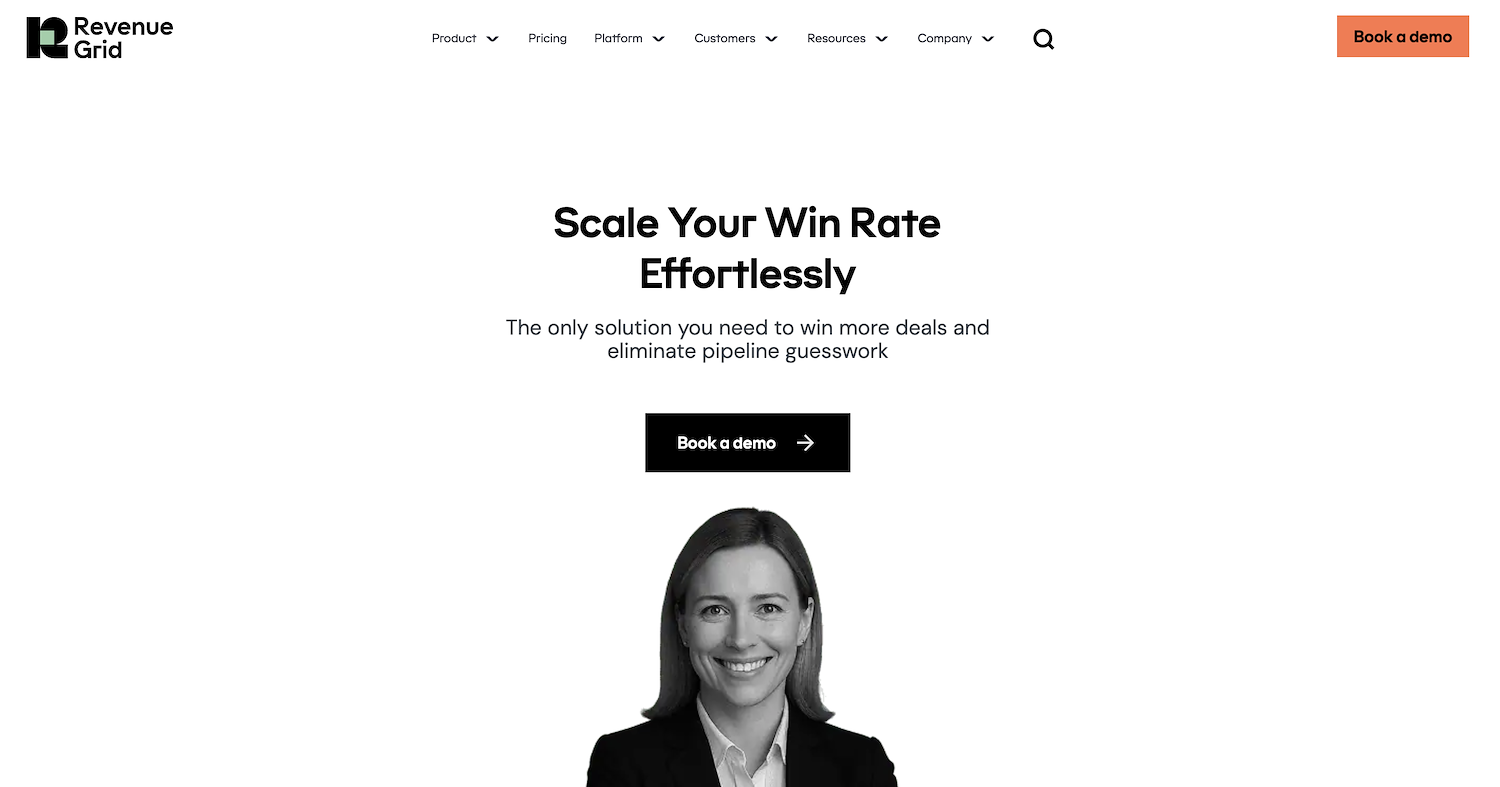
Revenue Grid is a revenue intelligence platform that captures sales activities and updates the CRM. The system provides visibility into the sales process and helps with sales forecasts.
Use cases include pipeline management, deal risk assessment, and relationship analysis. The platform also identifies sales patterns from top performers to guide team coaching.
Revenue Grid's Main Features
- Offers multichannel sales sequences for outreach and engagement.
- Includes an AI assistant, Mentor, that provides next-step guidance directly within the CRM.
- Provides Revenue Signals, which are contextual alerts for deal guidance and meeting assistance.
- Features tools for pipeline visibility and team analytics to assist with sales forecasting.
How Revenue Grid Compares to Introhive
Average Review score: 4.5/5 stars based on 512 G2 reviews.
- Revenue Grid offers an AI assistant, Mentor, that gives next-step guidance directly in the CRM. This provides more direct deal support compared to Introhive's focus on relationship mapping.
- The platform includes multichannel sales sequences for outreach. This automates engagement, which is different from Introhive's approach of finding opportunities through network analysis.
- It analyzes sales patterns from top performers to create team coaching guides. This offers a structured way to improve team skills, a feature not central to Introhive's relationship intelligence platform.
- The tool uses Revenue Signals to send contextual alerts for deal guidance. This gives sales teams real-time warnings about deal health, a more immediate function than Introhive's broader relationship analysis.
Where Revenue Grid May Fall Short
- Revenue Grid focuses its relationship intelligence on the buyer's team. Compared to Introhive, it may not provide as deep a view of the internal company network, which can limit finding cross-departmental opportunities.
- The platform captures data mainly from emails, calendars, and calls. Some users might find this less comprehensive than Introhive, which can map relationships from a wider array of communication channels.
- Its features center on managing the sales process with deal guidance and outreach sequences. For teams that need a general tool for internal collaboration, Introhive's broader relationship mapping offers a more direct solution.
Pricing and Budget Considerations
User reviews place both platforms in a high-cost category. Revenue Grid, however, shows a faster return on investment at 11 months compared to Introhive's 25 months. For exact pricing, we recommend visiting Revenue Grid's official website, as costs are customized.
7) Salesloft
Salesloft is a sales engagement platform that helps teams execute their sales process. It provides tools for managing outreach, tracking customer interactions, and analyzing performance. The system is designed to help sales representatives build pipeline and close deals through structured communication.
Salesloft's Main Features
- Automates multichannel outreach through sales cadences that combine email, calls, and social touches.
- Offers conversation intelligence to record, transcribe, and analyze sales calls for coaching.
- Provides deal management tools to track pipeline health and identify at-risk opportunities.
- Includes analytics and reporting to measure sales activity, cadence performance, and revenue outcomes.
How Salesloft Compares to Introhive
Average Review score: 4.6/5 stars based on 3,879 G2 reviews.
- Salesloft is a sales engagement platform focused on execution. This is different from Introhive, which is a relationship intelligence tool for finding opportunities through network analysis.
- The platform provides sales cadences for structured outreach. This gives reps a direct way to engage prospects, a function not offered by Introhive.
- It includes conversation intelligence for call coaching. This provides specific performance insights, while Introhive offers broader relationship mapping.
- Its analytics measure sales activity and cadence effectiveness. This is a more direct performance metric compared to Introhive's focus on relationship strength.
Where Salesloft May Fall Short
- Salesloft does not map internal company networks to find "who knows who." This is the core function of Introhive.
- Its relationship data is based on the sales team's direct activities. It may not capture the informal connections that Introhive uncovers from wider communication data.
- The platform is built for sales execution. For teams needing a general tool for internal collaboration or partnership discovery, Introhive is a more direct fit.
Pricing and Budget Considerations
User reviews place both platforms in a high-cost category. Salesloft, however, shows a faster return on investment at 10 months compared to Introhive's 25 months. For exact pricing, we recommend visiting Salesloft's official website, as costs are customized.
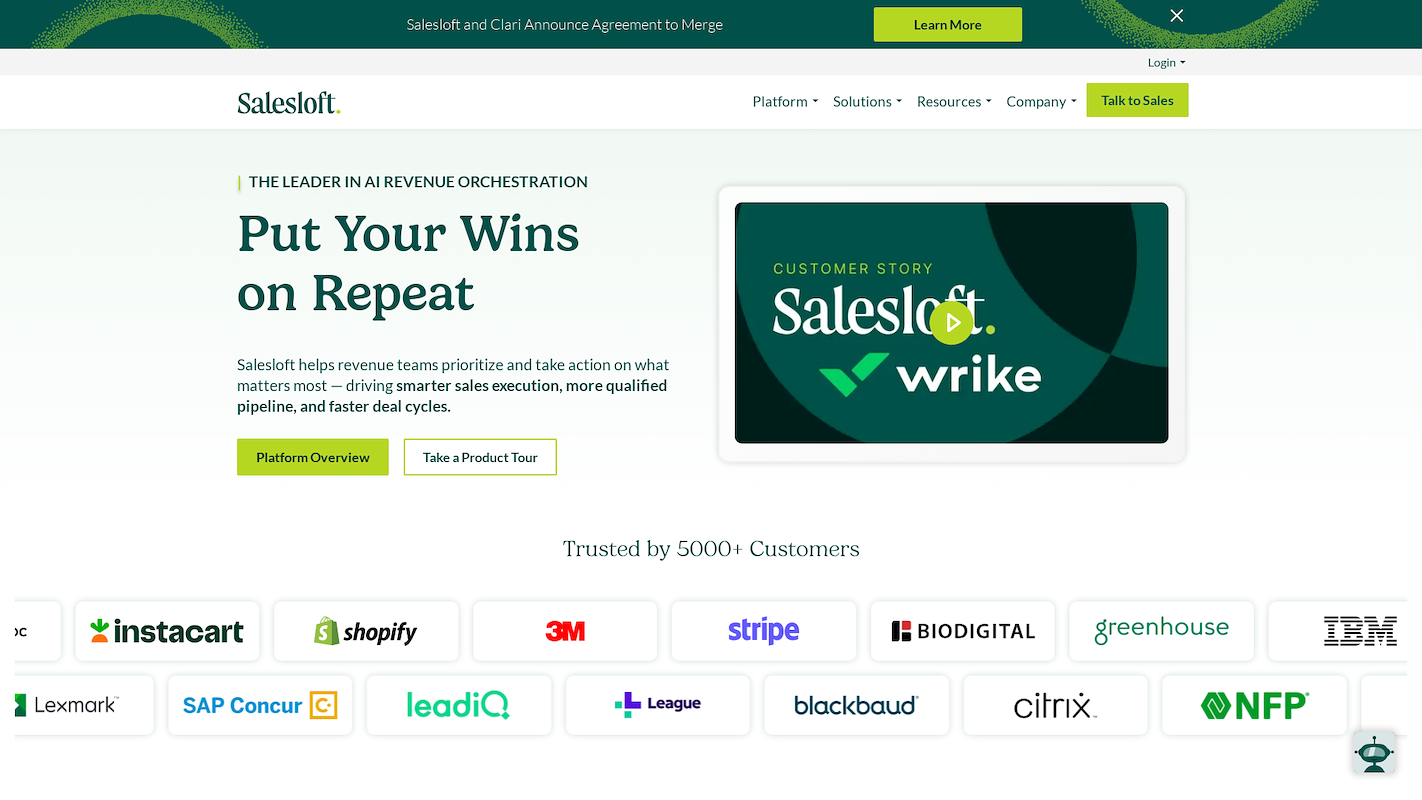
Salesloft is a sales engagement platform that helps teams execute their sales process. It provides tools to manage outreach, track customer interactions, and analyze performance. Through structured communication, the system helps sales representatives build pipeline and close deals.
Salesloft's Main Features
- Automates structured workflows for pipeline building, lead nurturing, and renewals.
- Recommends the right actions at the right moments with AI-driven prioritization.
- Engages website visitors with real-time, personalized conversations using AI chat agents.
- Automates and scales sales processes with outcome-first AI agents.
How Salesloft Compares To Introhive
Average Review score: 4.5/5 stars based on 4,145 G2 reviews.
- Salesloft automates multichannel outreach through sales cadences. This provides a structured execution plan for sales teams, unlike Introhive, which maps relationships to find opportunities.
- The platform offers conversation intelligence to analyze sales calls for coaching. This gives specific performance insights, while Introhive provides broader intelligence based on network connections.
- It includes deal management tools that track pipeline health and identify at-risk opportunities. This offers a more direct way to manage deals compared to Introhive's focus on relationship strength.
- The tool uses AI to recommend specific actions for sales reps. This provides direct guidance on deals, which is different from Introhive's more passive discovery of existing connections.
Where Salesloft May Fall Short
- Salesloft focuses on sales execution and does not map internal company networks. This is different from Introhive, which creates a detailed view of who knows who inside an organization.
- Its relationship data comes from the sales team's direct activities. Some users may find it does not capture the informal connections that Introhive uncovers from a wider set of communication data.
- The platform is built for sales execution. For teams that need a general tool to support internal collaboration or find partners, Introhive offers a more direct solution.
Pricing and Budget Considerations
User reviews place both platforms in a high-cost category. Salesloft, however, shows a faster return on investment at 11 months compared to Introhive's 25 months. For exact pricing, we recommend visiting Salesloft's official website, as costs are customized.
8) Outreach
Outreach is a sales execution platform that helps revenue teams automate and manage their engagement with prospects and customers. It provides tools for creating sales sequences, tracking interactions, and gaining insights into deal health to drive predictable revenue.
Outreach's Main Features
- Automates sales engagement with multichannel sequences, known as Cadences.
- Provides conversation intelligence with an AI assistant, Kaia, to analyze calls and meetings.
- Offers deal management and forecasting tools with AI-driven insights for pipeline visibility.
- Includes analytics to track team performance and the effectiveness of sales activities.
How Outreach Compares to Introhive
Average Review score: 4.4/5 stars based on 3,289 G2 reviews.
- Outreach is a sales execution platform focused on structured outreach, while Introhive is a relationship intelligence platform for network discovery.
- The platform uses sales Cadences to automate engagement. This is a direct execution function not found in Introhive's relationship mapping tool.
- It offers conversation intelligence for call analysis and coaching. This provides specific performance feedback, whereas Introhive gives broader network insights.
- Its AI provides deal-specific insights and forecasting. This is a different approach from Introhive, which identifies opportunities based on relationship strength.
Where Outreach May Fall Short
- Outreach is not designed to map internal company networks. This is the primary function of Introhive, which excels at showing who knows who.
- Its relationship data is derived from direct sales activities. It may not capture the informal, internal connections that Introhive can uncover from other data sources.
- The platform is built for sales teams to execute their process. For general internal collaboration or finding partners, Introhive is a more suitable tool.
Pricing and Budget Considerations
User reviews place both platforms in a high-cost category. Outreach, however, shows a faster return on investment at 10 months compared to Introhive's 25 months. For exact pricing, we recommend visiting Outreach's official website, as costs are customized.
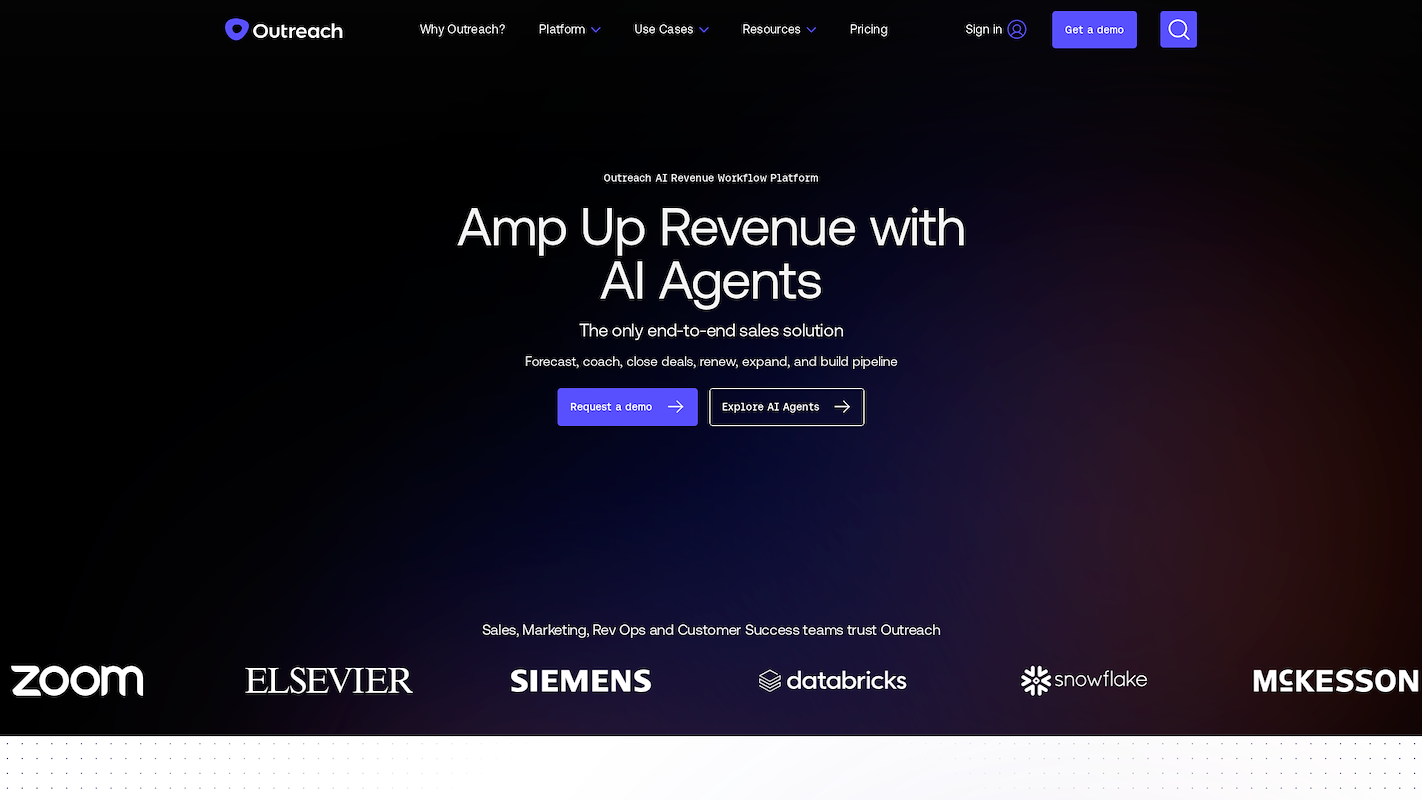
Outreach is a sales execution platform for revenue teams to automate and manage customer engagement. It provides tools to build sales sequences, follow interactions, and analyze deal health. The platform uses AI insights for deal management and forecasts to support predictable revenue outcomes.
Outreach's Main Features
- Automates emails and provides analytics on open rates and link activity.
- Includes calling features with a click-to-call function for direct outreach.
- Records prospect data and notes, then generates insights and analytics with a daily summary.
- Offers personalization options for managing contacts and communication.
How Outreach Compares to Introhive
Average Review score: 4.3/5 stars based on 3,479 G2 reviews.
- Outreach automates sales engagement with multichannel sequences. This provides a structured execution plan, which is different from Introhive's focus on opportunity discovery through network analysis.
- The platform includes a click-to-call function for direct outreach. This feature supports immediate sales actions, a function not present in Introhive's relationship intelligence tool.
- Its AI assistant, Kaia, analyzes sales calls to provide insights for coaching. This offers specific performance feedback, whereas Introhive provides broader insights based on network strength.
- The tool's analytics track email open rates and link activity. This measures campaign performance directly, while Introhive focuses on the strength of relationships.
Where Outreach May Fall Short
- Outreach focuses on the sales process, so it does not map the informal relationships inside a company. This is different from Introhive, which builds a detailed “who knows who” map for internal collaboration and warm introductions.
- The platform's relationship insights come from sales activities. Some users may find this limiting compared to Introhive, which analyzes a wider range of communication data to find hidden connections across the entire company.
- Its features are designed for sales execution. This means it may not be the right fit for use cases like strategic account management or partnership discovery, where Introhive's deep network analysis provides more value.
Pricing and Budget Considerations
User reviews place both platforms in a high-cost category. Outreach, however, shows a faster return on investment at 11 months compared to Introhive's 25 months. For exact pricing, we recommend visiting Outreach's official website, as costs are customized.
9) Groove

Groove is a sales engagement platform that focuses on sales process automation. It provides tools to manage customer interactions and automatically capture activities in a CRM. The system supports sales teams with pipeline management and data for revenue operations.
Use cases include account-based sales, lead conversion, and full-cycle sales support. The platform connects with Salesforce to reduce manual data entry.
Groove's Main Features
- Manages support workflows with ticket and case management tools.
- Converts incoming emails into support cases automatically.
- Offers templates to create standardized responses for common issues.
- Allows for internal discussion within tickets for team collaboration.
How Groove Compares to Introhive
Average Review score: 4.6/5 stars based on 193 G2 reviews.
- Groove provides ticket and case management to organize support workflows. This is different from Introhive, which focuses on mapping relationships for sales opportunities.
- The platform automatically converts emails into support cases. In comparison, Introhive analyzes email data to understand network connections, not to manage support requests.
- It includes templates for standardized responses to common issues. This offers a way to manage customer communication that is not a feature of Introhive's platform.
- This tool allows for internal team discussions within support tickets. This provides focused collaboration on customer issues, whereas Introhive offers broader visibility into the company's internal network.
Where Groove May Fall Short
- Groove is designed for customer support, so it does not map internal company networks. This is different from Introhive, which specializes in creating a detailed "who knows who" view to find sales opportunities and warm introductions.
- The platform captures customer communications primarily to manage support tickets. It does not analyze this data to measure relationship strength across the company, a key feature that Introhive provides for strategic account management.
- Some users report that Groove's reporting features are limited. The tool is not built for sales forecasting or deal health analysis, which are central functions within Introhive's revenue intelligence platform.
Pricing and Budget Considerations
Groove offers transparent, tiered pricing with plans starting at $15 per user per month, which provides more budget predictability than Introhive's custom, high-cost model. While starter plans are clearly priced, we recommend contacting Groove directly for Enterprise plan costs.
10) ZoomInfo SalesOS
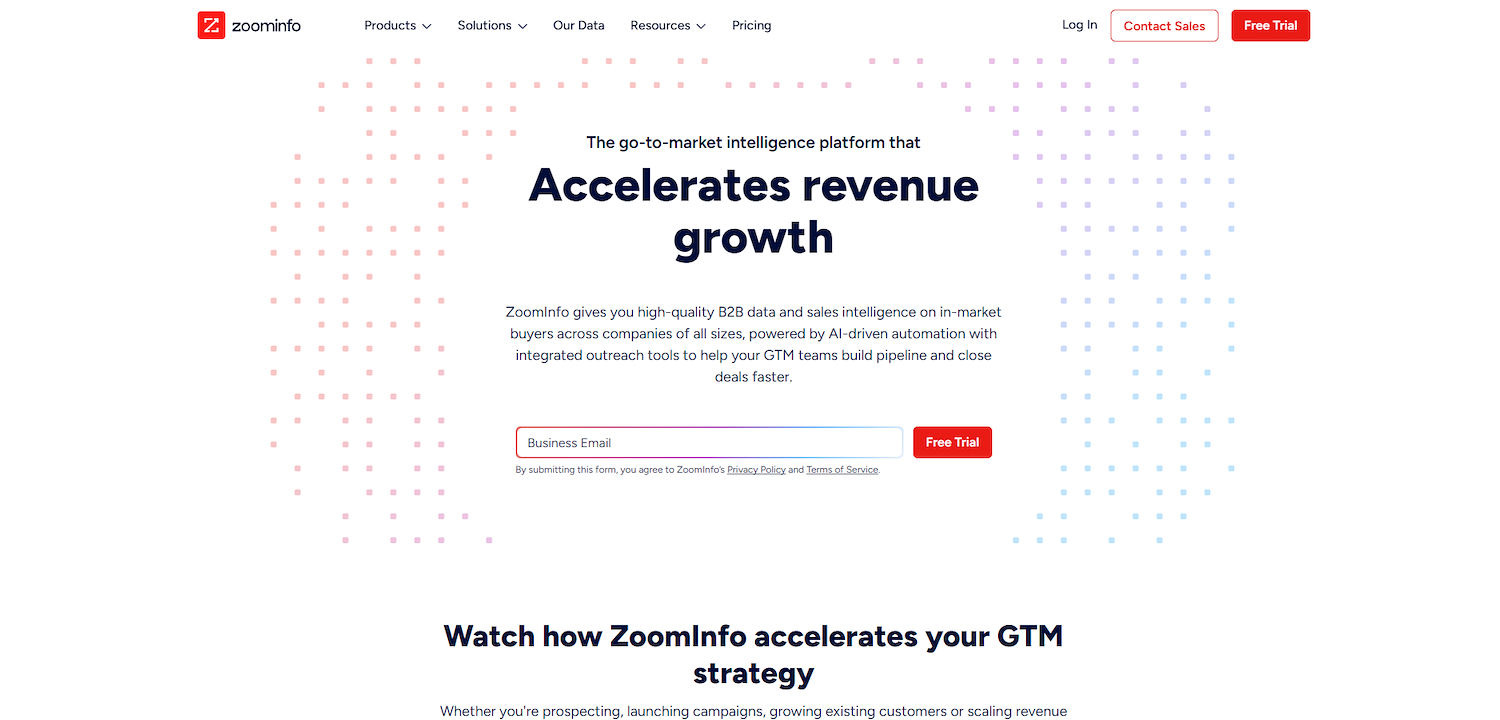
ZoomInfo SalesOS is a go-to-market intelligence platform that provides access to a B2B database of company and contact information. Sales teams use this data to find and connect with potential buyers.
The platform supports the sales process with functions for lead generation and account selection. It helps users identify key contacts within target companies and supplies their details for outreach.
ZoomInfo SalesOS's Main Features
- Provides access to a B2B database with company, contact, and purchasing intent data.
- Uses an AI Copilot to give recommendations on who to contact, when to engage them, and what to say.
- Includes tools for conversation intelligence (Chorus), sales engagement (Engage), and data orchestration (RingLead).
- Offers data cleaning and enrichment for integration with CRM and marketing automation platforms.
How ZoomInfo SalesOS Compares to Introhive
Average Review score: 4.5/5 stars based on 8,738 G2 reviews.
- ZoomInfo SalesOS provides a large B2B database to find new contacts and companies. This is different from Introhive, which maps existing relationships within your company's network.
- The platform includes a sales engagement tool, Engage, for direct outreach. This is a sales execution feature, while Introhive's platform is designed for discovering opportunities through network analysis.
- Its AI Copilot gives recommendations on who to contact and when to engage them. This offers more direct sales guidance compared to Introhive's focus on uncovering existing internal connections.
- This tool supplies buyer intent data to identify companies actively looking for solutions. This provides a different type of signal for sales teams compared to Introhive's relationship strength indicators.
Where ZoomInfo SalesOS May Fall Short
- ZoomInfo SalesOS provides external B2B data to find new leads. Unlike Introhive, it does not map your company's internal network, so you cannot see "who knows who" for warm introduction paths.
- The platform's data comes from its large B2B database. This is different from Introhive, which analyzes your company's communication data to uncover passive, informal relationships that exist across different departments.
- Its primary use is for lead generation. For strategic account management that relies on deep internal network analysis, some users might find Introhive's relationship mapping more suitable.
Pricing and Budget Considerations
User reviews place both platforms in a high-cost category, but ZoomInfo SalesOS shows a faster return on investment at 14 months compared to Introhive's 25 months. For exact pricing, we recommend visiting the ZoomInfo SalesOS's official website as costs are customized based on your needs.
Which One Should You Go With?
Choosing an Introhive alternative depends on many variables, from your budget to your specific sales process. This guide reviewed several options to help you find the right platform for your team's needs.
If you want to add digital workers to your sales process, 11x provides tools for task automation. This approach lets your sales representatives concentrate on their primary goals.




